
A Complete Guide to Ethereum's Kiln Testnet
Written by Alchemy
Deprecation Notice: The Kiln testnet was deprecated by the Ethereum Foundation during the week of September 12th, and as of September 26th, 2022, Alchemy's Kiln faucet has been deprecated.
Testnets allow developers to test the functionality of their applications before deploying them to a blockchain’s mainnet’s production environment. Before Ethereum switches its consensus mechanism from proof-of-work to proof-of-stake, developers must have a safe environment to test their applications and guarantee a smooth transition when the Ethereum 2.0 upgrade takes place.
The Ethereum Kiln merge testnet helps developers test their applications on the post-merge Ethereum blockchain. The Kiln testnet launched as a proof-of-work blockchain in parallel with the Beacon chain, and merged on March 15, 2022, transitioning to a fully proof-of-stake system allowing developers, node operators, and stakers to get familiar with a post-merge Ethereum environment.
This article covers the essential aspects of the Kiln testnet, including why a developer would use it, how to acquire and send testnet Ether, and an overview of helpful tools for building, monitoring, and testing applications.
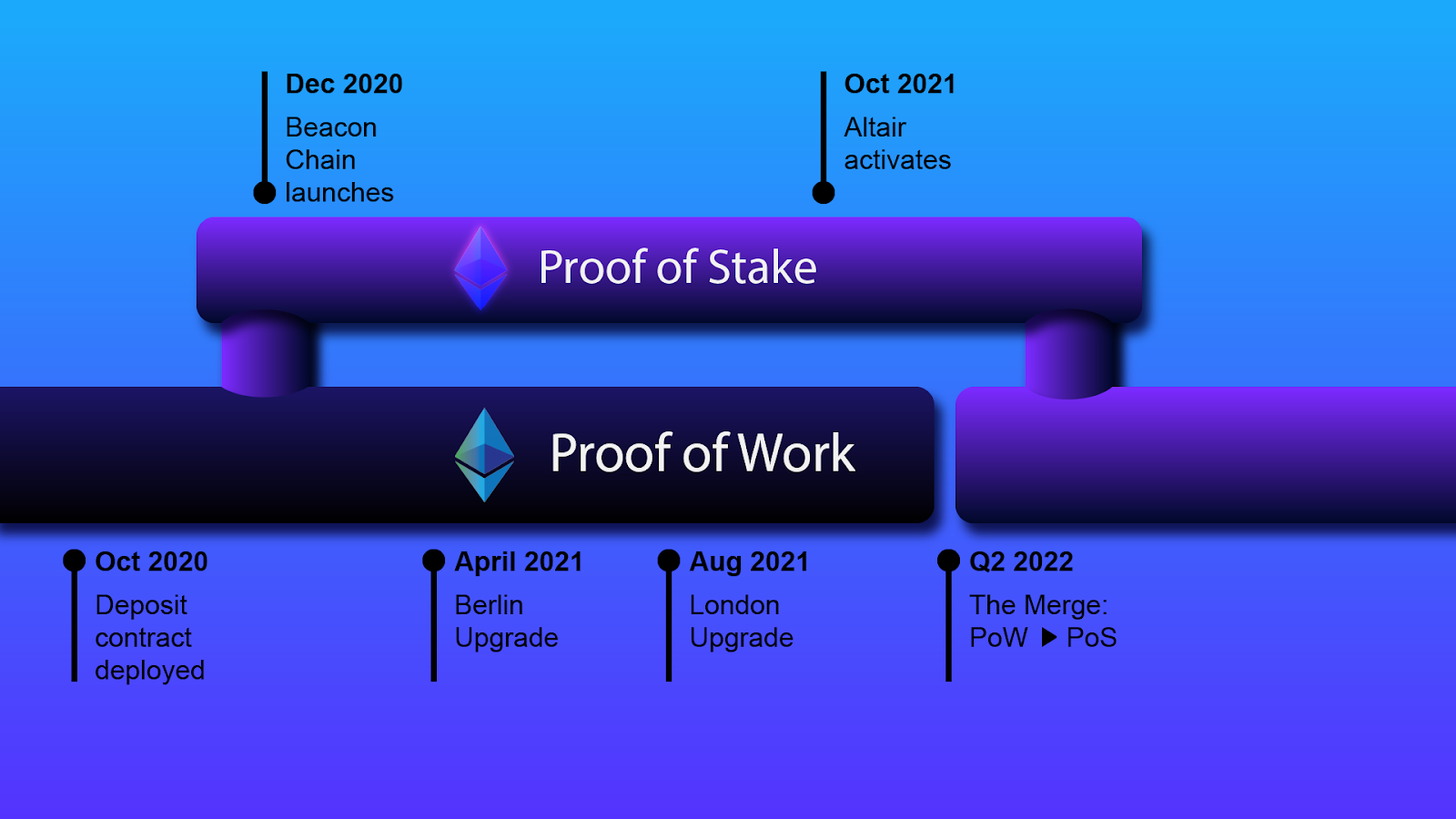
What is the Kiln testnet?
The Kiln testnet simulates the Ethereum mainnet's merge with the beacon chain, initiating the complete transition from proof-of-work to proof-of-stake network consensus. Kiln’s merge testnet acts as a development environment for developers, node validators, and stakers to experiment with their application(s) functionality on the upcoming Ethereum upgrade to proof-of-stake consensus before The Merge takes place.
Kiln launched as a proof-of-work system and transitioned to proof-of-stake on March 15, 2022, and is maintained by the Ethereum developer team. The public Kiln testnet currently has 110,000 active validators with 3.5 million ETH staked. The network has processed 1.3 million total transactions at an average of eight thousand per day since its inception.
Is the Kiln testnet deprecated?
As of September 26th, 2022, Alchemy's Kiln faucet has been deprecated and no longer serving active requests as the Kiln Testnet has been deprecated by the Ethereum Foundation.
Why was a developer likely to use the Kiln merge testnet vs. other testnets?
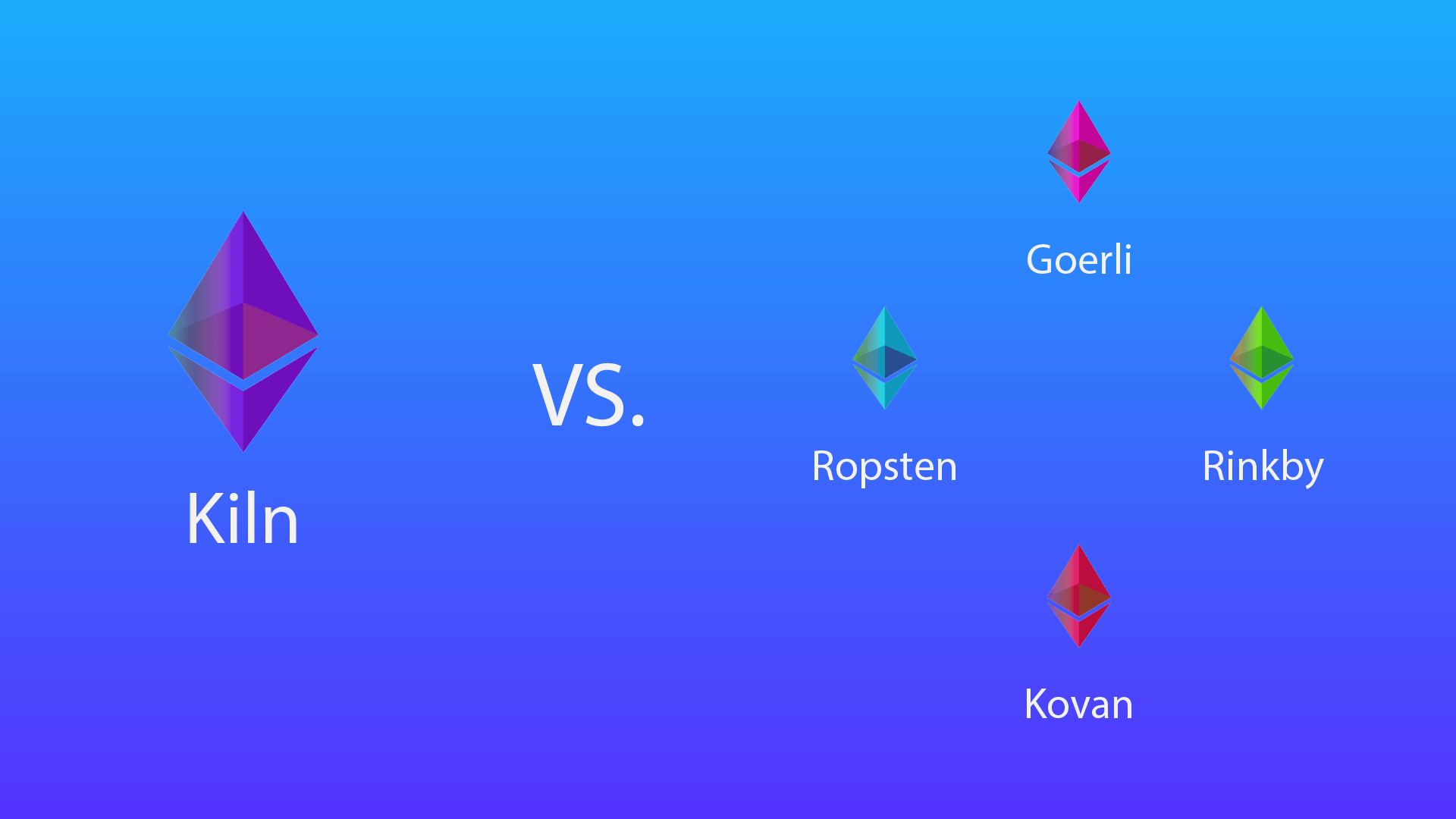
When choosing a testnet, a developer would deploy to the Kiln testnet to experiment with their application's functionality on a proof-of-stake beacon chain.
For instance, if a developer created an NFT smart contract and wanted to ensure it ran as intended after the Ethereum merge, they could use the Kiln testnet to test the contract functionality.
There are many different types of testnets, and each serves a different purpose for testing applications. For an overview, read Alchemy’s guide on Ethereum testnets to learn when different testnets should be utilized.
Many of the current testnets are still using the proof-of-work consensus and will soon be deprecated and replaced with proof-of-stake testnets.
How to Get Testnet ETH
Since the deprecation of the Kiln testnet, developers and Ethereum enthusiasts have transitioned to using the Sepolia testnet as an alternative testnet for testing Ethereum protocol upgrades and smart contracts. Here's a step-by-step guide on obtaining Sepolia ETH from a Sepolia testnet faucet that allows anyone to send a small amount of fake ETH to their wallet.
Head to Alchemy's free Sepolia Faucet
Sign in to your Alchemy account
Enter your wallet address or ENS name
Click "Send Me ETH"
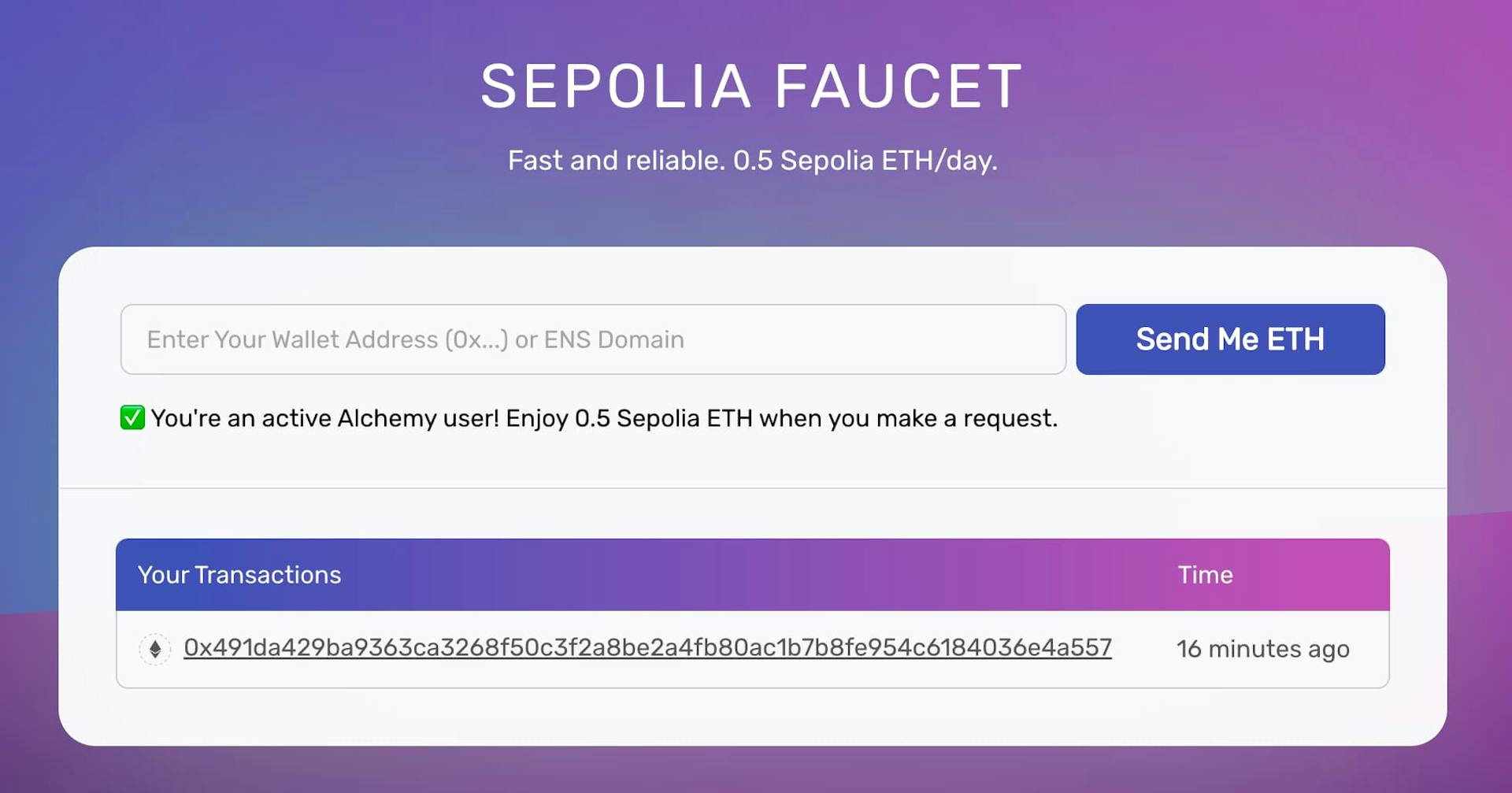
A popup will display ‘Transaction sent’ with the amount of Sepolia ETH deposited to your wallet.
Next, you can check your Ethereum wallet to confirm you received the SepoliaETH.
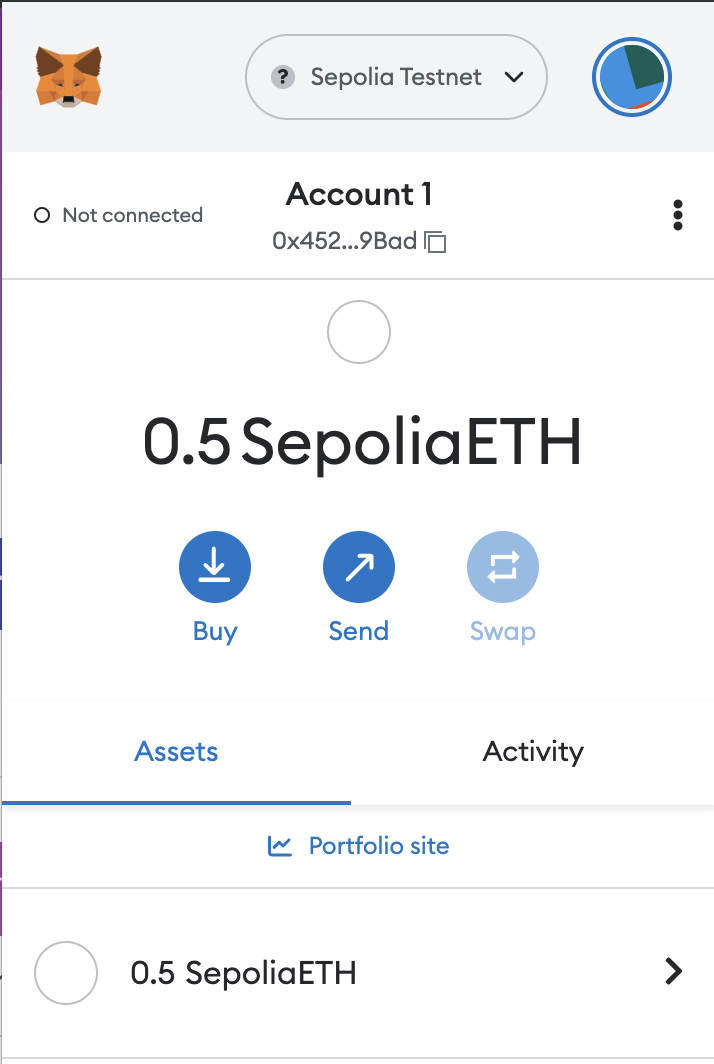
With your Sepolia ETH, you can now run smart contracts on the Sepolia testnet.
To view the date and time, transaction fee, gas burnt, and other transaction details, you can look up your transaction hash on the Sepolia Etherscan.
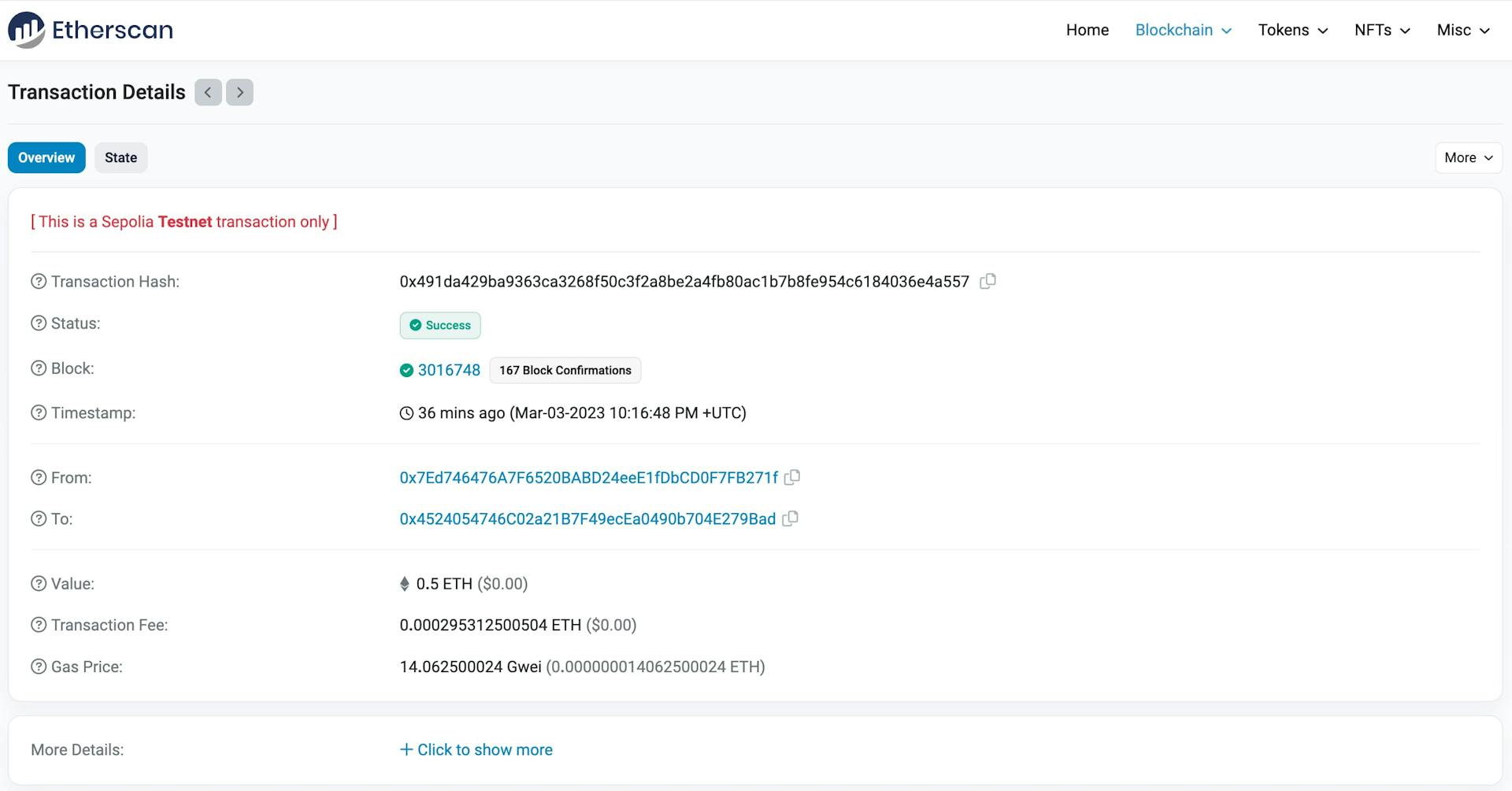

Related overviews
Building on Base? Get free Sepolia ETH and start testing your dApp!
Learn How to Migrate to the New Ethereum Testnet Sepolia From Goerli
Migrating dApps and Bridging Goerli ETH to Optimism

Build blockchain magic
Alchemy combines the most powerful web3 developer products and tools with resources, community and legendary support.